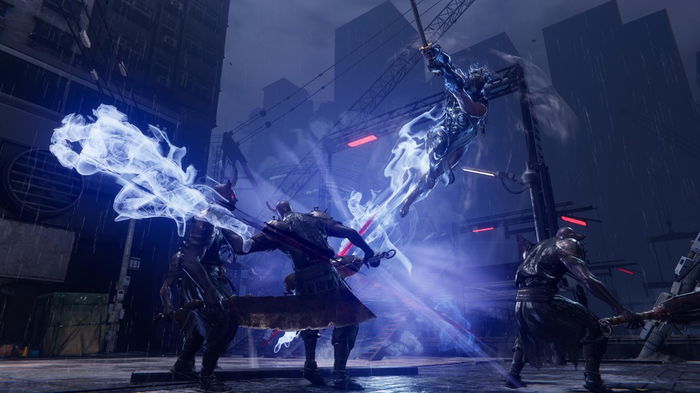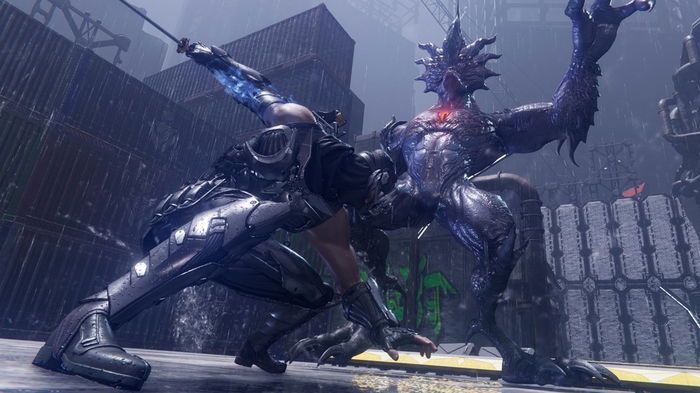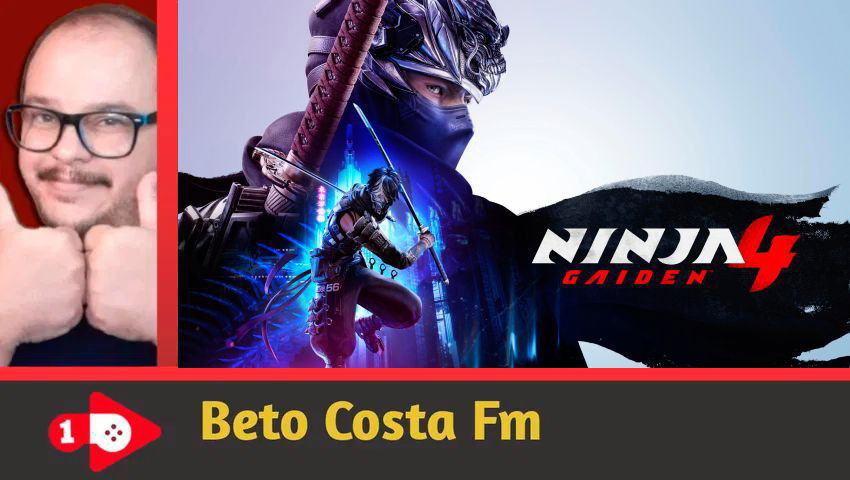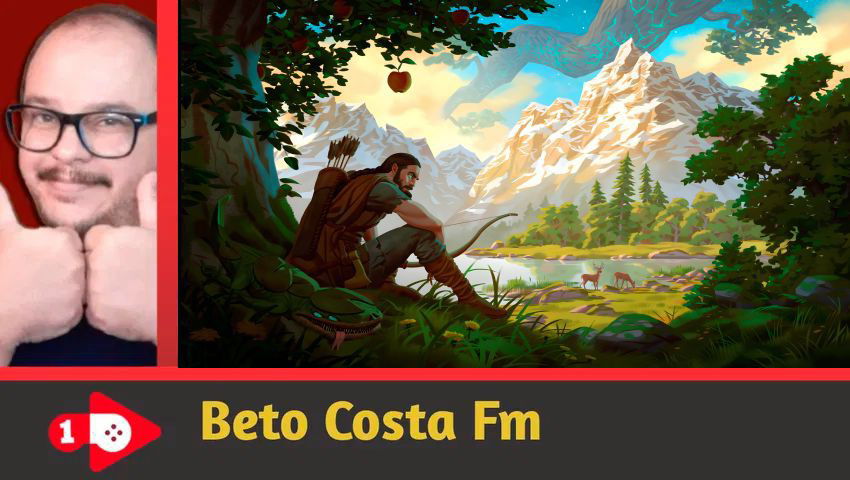After more than a decade of silence, the legendary Ninja Gaiden series returns with full force in Ninja Gaiden 4, a game that seeks to balance tradition and innovation. Developed by TeamNinja in partnership with PlatinumGames and published by XboxGameStudios, the title brings back the fierce and stylish spirit that has always defined the franchise, now set in a futuristic Tokyo immersed in chaos and darkness.
This new chapter puts the player in the shoes of Yakumo, a young ninja destined to face supernatural forces that threaten humanity. Alongside him, the legendary Ryu Hayabusa returns as a central, playable figure in specific parts of the story. The result is a game that impressively combines intensity, fluidity, and brutality, offering an experience that simultaneously honors the past and charts new paths for the series.
Plot and setting
The story takes place in a future Tokyo, shrouded in a toxic fog called miasma, which serves as a visual and thematic metaphor for the corruption and moral collapse of the world. The city is under the control of a secret organization that manipulates demonic energy and creates cybernetic soldiers and monsters to maintain its power. It’s in this context that Yakumo, a member of the Raven clan, emerges as the new hero, or perhaps as the new sacrifice, destined to restore balance.
The plot is straightforward and fulfills its role as a backdrop to the action. It doesn't try to reinvent the genre, but reinforces the elements that have always characterized Ninja Gaiden: honor, revenge, discipline and sacrifice. Ryu Hayabusa, the classic protagonist, appears at key moments and helps connect the new narrative arc to the franchise's roots.
The setting is one of the highlights. The contrast between the glow of neon and the terror of the shadows creates a suffocating and fascinating atmosphere. The soundtrack, which blends traditional Japanese instruments with electronic beats and distorted guitars, heightens the atmosphere, somewhere between epic and apocalyptic. Everything feels alive and pulsating, as if the city itself were an enemy watching the player's every move.

Gameplay and Combat
The heart of Ninja Gaiden 4 is, as always, the fast, precise, and relentless combat. The game isn't content to simply replicate the old style; it refines it. Strikes are responsive, combos flow naturally, and each battle is a visual spectacle of blades, blood, and acrobatics.
The main innovation is the Bloodbind Ninjutsu system, which allows Yakumo to channel demonic energy into his weapons, altering his combat style and adding devastating effects. This mechanic creates an interesting dynamic between risk and reward: the more the player uses the power, the more vulnerable they become to counterattacks.
Yakumo also has two combat forms: the Base Form, more balanced and technical, and the Bloodraven Form, more savage and destructive. This duality adds strategic depth to the fights, as each enemy requires a different approach.
Furthermore, Ryu Hayabusa is playable in specific segments and maintains his classic combat style: fast, technical, and brutal. Switching between the two characters creates variety and nostalgia, reminding fans why the name Ninja Gaiden has become synonymous with elite combat.
The controls are incredibly precise. Jumps, dodges, and blocks respond instantly, and the feeling of absolute control over the character is one of the game's greatest strengths. Even amidst the chaos, everything seems under the player's control until the moment a millimeter error leads to instant death, reminding us that Ninja Gaiden was never meant to be easy.
Difficulty and Accessibility
The franchise has always been known for its brutal difficulty, and Ninja Gaiden 4 maintains that reputation, albeit in a more balanced way. The game offers four main difficulty levels, ranging from a beginner-friendly mode to the legendary Master Ninja, which requires superhuman reflexes and complete mastery of the combat system.
There are, however, notable improvements in accessibility. Features such as auto-block, dodge assist, and auto-heal can be freely enabled or disabled, allowing players of different levels to enjoy the experience without undue frustration. This doesn't mean the game has become easier, but it demonstrates the developers' commitment to creating a fairer and more inclusive game.
In the higher modes, the challenge remains fierce: enemies attack in groups, bosses have complex patterns, and any mistake is punished with violence. But the learning curve is rewarding. Mastering combat here is an addictive process; each defeat teaches you something new, and each victory is a small achievement in discipline and precision.

Enemies and Level Design
The level design follows the series' traditional structure, with linear chapters that blend exploration, platforming, and intense combat. The levels range from futuristic streets to ruined temples and secret installations, always maintaining a fast pace. While progression is relatively straightforward, the game includes optional areas and extra challenges that reward the most curious players with special equipment and abilities.
The enemies are varied and require constant attention. Cybernetic soldiers, grotesque demons, and rival warriors test Yakumo's different combat styles. The bosses, as always, are the highlight: enormous, stylized, and with attack patterns that require quick reflexes and precise movement reading. Some of them may seem less inspired than the legendary bosses of previous games, but they still offer memorable confrontations.
The platforming, on the other hand, is the weakest point of the design. While there are sections of climbing and acrobatic jumps, camera control can hinder precision. Fortunately, these moments are brief and don't detract from the overall experience.
Overall, the level design serves as a backdrop for the spectacle of combat. The focus is always on maintaining an intense pace and a constant sense of danger, and in this, the game hits the mark.
Visuals and Technical Performance
Graphically, Ninja Gaiden 4 is a stunning game. Dynamic lighting, rain, particle effects, and character designs create a modern and brutal aesthetic. The blood and impact of blows are depicted with rich detail, conveying a sense of weight and ferocity.
Performance is stable, even in combat with multiple enemies on screen. The game runs at 60 fps on most platforms, with support for 120 fps on more powerful systems. Loading times are virtually non-existent, maintaining the frenetic pace of the action.
The sound design is another highlight. The battle soundtracks combine taiko drums, strings, and synthesizers, reinforcing the epic and modern tone of the narrative. It’s also good to notice that the Japanese and English voice acting are very competent.
Some argue that the look could’ve been even bolder, considering the development time and the series' legacy, but the end result is more than satisfactory: stylized, polished, and intense.

Content, length and replayability
The main campaign lasts between 15 and 20 hours, depending on the difficulty level and player skill. It may seem short at first glance, but the game's structure strongly encourages replayability.
After completing the story, new challenge modes are unlocked, including special arenas that test mastery of the combat system. There's also the ability to replay specific chapters with Ryu Hayabusa, offering variation and nostalgia.
The ranking system rewards perfection: the less damage the player takes and the more combos they perform, the higher the final score. This creates an addictive cycle of repetition and improvement, typical of the best hack-and-slash games.
The game also features a number of cosmetic options and unlockable secondary weapons, which encourage replayability. Players seeking 100% achievements or mastering all difficulty modes will find dozens of extra hours of content here.
However, for casual players who only want to complete the story once, the length may seem limited. Still, the replay value is sky-high, especially for those who enjoy the thrill of becoming truly good at something challenging.
Pros and Cons
Pros
- Fluid and technical combat: One of the best action experiences in recent years.
- Bloodbind Ninjutsu system: An innovation that adds depth and strategy.
- Duality of forms: Two distinct ways to play Yakumo, each with unique advantages.
- Accessibility and customization: Allows you to adjust the challenge without compromising the spirit of the game.
- Soundtrack and ambiance: An excellent fusion of traditional and futuristic styles.
- High replayability: Mastering the game is a rewarding experience.
- Playable Ryu Hayabusa: A nostalgic nod that honors the franchise's legacy.
Cons
- Predictable story: It does its job, but doesn't offer any major surprises.
- Linear level design: Few opportunities for more open exploration.
- Unstable camera in certain areas: Can be distracting during jumps or confrontations with multiple enemies.
- Inconsistent bosses: Some memorable, others too generic.
- Price and length: May seem high for more casual players.

Who is it recommended for?
Ninja Gaiden 4 is, above all, a game for those who love intense action and technical combat. Longtime fans will feel at home with its demanding difficulty, acrobatic movements, and relentless pace. New players will find a game that, despite its reputation for difficulty, offers enough tools to learn and evolve.
Those seeking a deep narrative may be a little disappointed, but those seeking pure adrenaline will find here one of the best modern examples of the hack-and-slash genre.
Conclusion
Ninja Gaiden 4 is a triumphant return, a tribute to the series' history, and a natural evolution of its formula. The game doesn't try to please everyone, but it knows exactly what it wants to be: a celebration of precision, speed, and mastery. Every strike, every dodge, and every victory carries the weight of ninja tradition and the satisfaction of personal achievement.
The balance between accessibility and challenge is one of the game's greatest achievements. Even those new to the franchise can delve into this world of shadows and blood without feeling unfairly punished. At the same time, veteran fans will find the level of challenge that has always defined the series.
Some aspects could’ve been bolder, especially the narrative and level design, but the essence of the game is so solid that these details pale in comparison to the bigger picture. Ninja Gaiden 4 proves that there's still room for experiences focused on skill, patience, and precision in a market dominated by cinematic narratives and endless open worlds.
When blades meet and blood flows, time seems to stand still. It’s in that instant that the spirit of Ninja Gaiden resurfaces—swift, lethal, and unforgettable.













— Comments 0
, Reactions 1
Be the first to comment